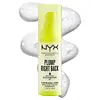What's inside
What's inside
 Key Ingredients
Key Ingredients

 Benefits
Benefits

 Concerns
Concerns

No concerns
 Ingredients Side-by-side
Ingredients Side-by-side

Water
Skin ConditioningGlycerin
HumectantPEG-150 Distearate
EmulsifyingButylene Glycol
HumectantPvp
Emulsion StabilisingOpuntia Ficus-Indica Stem Extract
Skin ConditioningPotassium PCA
HumectantCarbomer
Emulsion StabilisingSodium Hyaluronate
HumectantTromethamine
BufferingMagnesium PCA
HumectantHydroxypropyltrimonium Hyaluronate
Caprylyl Glycol
EmollientTrisodium Ethylenediamine Disuccinate
Xanthan Gum
EmulsifyingPanthenol
Skin ConditioningEthylhexylglycerin
Skin ConditioningTocopherol
AntioxidantAscorbyl Palmitate
AntioxidantPotassium Sorbate
PreservativePhenoxyethanol
PreservativeParfum
MaskingLimonene
PerfumingBenzyl Alcohol
PerfumingBenzyl Salicylate
PerfumingWater, Glycerin, PEG-150 Distearate, Butylene Glycol, Pvp, Opuntia Ficus-Indica Stem Extract, Potassium PCA, Carbomer, Sodium Hyaluronate, Tromethamine, Magnesium PCA, Hydroxypropyltrimonium Hyaluronate, Caprylyl Glycol, Trisodium Ethylenediamine Disuccinate, Xanthan Gum, Panthenol, Ethylhexylglycerin, Tocopherol, Ascorbyl Palmitate, Potassium Sorbate, Phenoxyethanol, Parfum, Limonene, Benzyl Alcohol, Benzyl Salicylate
Water
Skin ConditioningGlycerin
HumectantPolyglyceryl-10 Eicosanedioate/Tetradecanedioate
Skin ConditioningPEG-150 Distearate
EmulsifyingPvp
Emulsion StabilisingPhenoxyethanol
PreservativeXylitylglucoside
HumectantPullulan
Anhydroxylitol
HumectantCarbomer
Emulsion StabilisingCaprylyl Glycol
EmollientXylitol
HumectantSodium Phytate
Niacinamide
SmoothingEthylhexylglycerin
Skin ConditioningSodium Hydroxide
Buffering1,2-Hexanediol
Skin ConditioningSodium Hyaluronate
HumectantCitric Acid
BufferingWater, Glycerin, Polyglyceryl-10 Eicosanedioate/Tetradecanedioate, PEG-150 Distearate, Pvp, Phenoxyethanol, Xylitylglucoside, Pullulan, Anhydroxylitol, Carbomer, Caprylyl Glycol, Xylitol, Sodium Phytate, Niacinamide, Ethylhexylglycerin, Sodium Hydroxide, 1,2-Hexanediol, Sodium Hyaluronate, Citric Acid
 Reviews
Reviews

Ingredients Explained
These ingredients are found in both products.
Ingredients higher up in an ingredient list are typically present in a larger amount.
Caprylyl Glycol is a humectant and emollient, meaning it attracts and preserves moisture.
It is a common ingredient in many products, especially those designed to hydrate skin. The primary benefits are retaining moisture, skin softening, and promoting a healthy skin barrier.
Though Caprylyl Glycol is an alcohol derived from fatty acids, it is not the kind that can dry out skin.
This ingredient is also used as a preservative to extend the life of products. It has slight antimicrobial properties.
Learn more about Caprylyl GlycolCarbomer is a polymer of acrylic acid. Its main role is to create a gel consistency.
A high amount of carbomer can cause pilling or balling up of products. Don't worry, most products contain 1% or less of carbomer.
Ethylhexylglycerin (we can't pronounce this either) is commonly used as a preservative and skin softener. It is derived from glyceryl.
You might see Ethylhexylglycerin often paired with other preservatives such as phenoxyethanol. Ethylhexylglycerin has been found to increase the effectiveness of these other preservatives.
Glycerin is already naturally found in your skin. It helps moisturize and protect your skin.
A study from 2016 found glycerin to be more effective as a humectant than AHAs and hyaluronic acid.
As a humectant, it helps the skin stay hydrated by pulling moisture to your skin. The low molecular weight of glycerin allows it to pull moisture into the deeper layers of your skin.
Hydrated skin improves your skin barrier; Your skin barrier helps protect against irritants and bacteria.
Glycerin has also been found to have antimicrobial and antiviral properties. Due to these properties, glycerin is often used in wound and burn treatments.
In cosmetics, glycerin is usually derived from plants such as soybean or palm. However, it can also be sourced from animals, such as tallow or animal fat.
This ingredient is organic, colorless, odorless, and non-toxic.
Glycerin is the name for this ingredient in American English. British English uses Glycerol/Glycerine.
Learn more about GlycerinPeg-150 Distearate is an emulsifier and thickening agent. It is created from stearic acid.
As an emulsifier, peg-150 distearate helps other ingredients dissolve. This helps prevent ingredient separation.
This ingredient may not be Malassezia folliculitis, or fungal-acne safe.
Learn more about PEG-150 DistearatePhenoxyethanol is a preservative that has germicide, antimicrobial, and aromatic properties. Studies show that phenoxyethanol can prevent microbial growth. By itself, it has a scent that is similar to that of a rose.
It's often used in formulations along with Caprylyl Glycol to preserve the shelf life of products.
Pvp is a water-soluble synthetic polymer and common hairstyling ingredient. It is a film-forming ingredient and used to "hold" specific shapes of hair.
Pvp is less effective in high-humidity. It tends to draw moisture, but this moisture dismantles the structure and "hold".
Sodium Hyaluronate is hyaluronic acid's salt form. It is commonly derived from the sodium salt of hyaluronic acid.
Like hyaluronic acid, it is great at holding water and acts as a humectant. This makes it a great skin hydrating ingredient.
Sodium Hyaluronate is naturally occurring in our bodies and is mostly found in eye fluid and joints.
These are some other common types of Hyaluronic Acid:
Learn more about Sodium HyaluronateWater. It's the most common cosmetic ingredient of all. You'll usually see it at the top of ingredient lists, meaning that it makes up the largest part of the product.
So why is it so popular? Water most often acts as a solvent - this means that it helps dissolve other ingredients into the formulation.
You'll also recognize water as that liquid we all need to stay alive. If you see this, drink a glass of water. Stay hydrated!
Learn more about Water